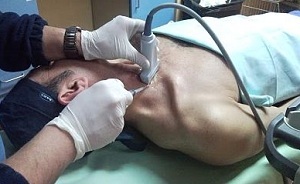 Paget-Shreter syndrome is an acute thrombosis of the subclavian vein.
Paget-Shreter syndrome is an acute thrombosis of the subclavian vein.
In 1960, this disease was known as an effort syndrome, because it is associated with excessive physical activity of a person.
Syndrome often occurs in athletes or in those who engage in difficult physical labor. Because of the burden of these individuals, veins can occur between the first rib and the collarbone.
Contents
Clinical picture
- Diagnosis
- Treatment of disease
- Conservative treatment
- Surgical treatment
- Possible complications
- Instead of withdrawal
Clinical picture
Three stages of the syndrome are distinguished:
- acute;
- subacute;
- is chronic.
In the clinical picture of acute subclavian vein thrombosis, several rather characteristic symptoms can be discarded:
- The most important symptom of the syndrome is edema of the affected arm and upper chest on that side of the .And the swelling on the arm is more pronounced. In most patients with thrombosis, which is located 2-5 cm more than the volume of a healthy limb. Less common puffiness - 1-2 cm. Very rarely occurs widespread thrombosis, which captures not only the shoulder but also the forearm veins - puffiness is more pronounced, of the order of 6-8 cm. That is, in the chronic stage of the Paget-Shreter syndrome there is always swelling. At an acute stage of the disease, edema is noted in about half of the patients. A remarkable characteristic of the syndrome is that when pressing on the swelling of the finger, there is no fossa. This is due to the expansion of venous and lymphatic vessels, in which fluid from the vascular bed passes into the subcutaneous tissue. This fact is often associated with patients' complaints of a feeling of tension, raspiraniya, as well as rapid fatigue and weakness in the limb.
- After the swelling, the second typical symptom of the syndrome is , subcutaneous vein dilatation in the shoulder and anterior thorax of the .This symptom occurs only in the chronic form of the disease. In the acute stage, it can be expressed weakly or completely absent.
- Even less constant symptom is pain in the arm .And in the acute stage it is observed only in half of patients, in
 chronic form the limb hurts even less. Such patients complain more about burning, heaviness, feeling of raspiraniya and cooling in the limbs.
chronic form the limb hurts even less. Such patients complain more about burning, heaviness, feeling of raspiraniya and cooling in the limbs. - Rarely, but there is cyanosis of the skin of the with a changing character. In the acute stage, it covers the arm in half of the patients. In chronic - cyanosis spotted color only on the brush.
- Very rare symptom - numbness or other manifestation of sensitivity disorder .
- There may also be strained veins in the ulnar fossa of .
Statement of diagnosis
Characteristic visual signs allow you to immediately diagnose the Paget-Shreter symptom.
In doubtful cases, instrumental methods are needed:
- The ultrasound can detect the compression of veins by surrounding structures.
- The phlebography reveals the localization and other characteristics of the thrombosis process, as well as the development of collateral circulation.
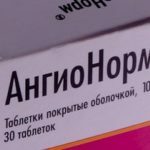 Before buying a medicine Angionorm: instructions for use, reviews of doctors and patients, advice on receiving.
Before buying a medicine Angionorm: instructions for use, reviews of doctors and patients, advice on receiving.
Modern and effective prophylaxis of thrombophlebitis - the basis of nutrition, exercise and a healthy lifestyle.
Treatment of the disease
Therapeutic tactics depend on the course of the disease. For Paget-Shreter syndrome, conservative treatment is more often used, but surgical intervention may sometimes be necessary.
Conservative treatment of
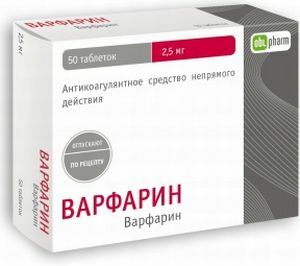 In an acute stage of the patient they put in a hospital and apply active antithrombotic therapy.
In an acute stage of the patient they put in a hospital and apply active antithrombotic therapy.
It includes fibrinolytics in the first 3-5 days, anticoagulants of indirect and direct action for 2-3 weeks, antiplatelet drugs. Simultaneously, anti-inflammatory non-steroid drugs are prescribed.
If the patient has gastritis or peptic ulcer disease, the drugs can be given in the form of suppositories. Usual aspirin is better to replace those forms that dissolve in the intestine. For 1-2 months patients must take medications that improve lymphatic and venous outflow.
According to the indications can prescribe vasodilator drugs. Sometimes sedative and desensitizing therapy can be indicated.
The mode is selected based on the patient's condition. Hand while walking should rest, therefore it is usually tied up. Lying in bed, the arm is raised above the shoulder level.
Since the first day, it is required to bandage the hand with an elastic bandage, but only if there is no discomfort from bandaging or total thrombosis.
Statistics show that in some patients there are repeated relapses of the disease. Therefore, all patients who have already been treated for the syndrome are prescribed antihistamines for prevention purposes and regular courses of conservative therapy are conducted.
Surgical treatment
Acute thrombosis of the subclavian vein requires surgical intervention in severe pain syndrome against severe violations of venous outflow, if the patient is unable to engage in professional activities.
The objective of surgical intervention of is the restoration of normal blood flow in the subclavian, humeral and axillary vein.
In acute , thrombectomy , as a recovery operation, is justified in the early days and even hours of onset of symptoms.
Many specialists believe that it is necessary to do a thrombectomy in the first 72 hours of the disease, while the thrombus has not yet fixed in the venous wall and can be easily removed.
In the chronic stage of acute thrombosis subclavian veins are already spoken about postthrombotic disease. At this stage, reconstructive surgery is justified only when segmental occlusion of veins is observed with a pronounced violation of venous outflow.
Surgeons should have relatively easy access to the axillary and subclavian vein.
With the Paget-Shreter syndrome, the most successful method is that developed in detail by Professor VS Saveliev and co-authors in the 70s. This technique involves making incisions parallel and slightly below the clavicle. 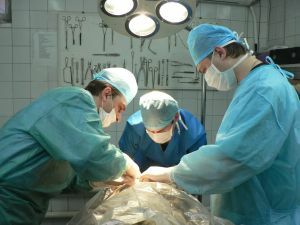
The incision of the skin has a beginning above the sternoclavicular joint, then at an acute angle to the collarbone passes along the contours of the sternoclavicular groove and terminates in the anterior part of the axillary line( 2.5 centimeters above the upper part of the armpit).
The skin is dissected, the cellulose is under it, the large muscle of the breast is divided, and the small one is diverted upward. The vein under the clavicle is involved after dissection of the subclavian muscle and rib-beak ligament.
The presented method makes it possible to make a revision of the vein under the clavicle over a sufficient length that contains the site of the initial formation of the thrombus.
The operation performed by this method yields the lowest values for traumatizing tissues, because the clavicle and muscles do not overlap.
Possible complications of
If the symptoms include redness or blueness, a feeling of heat, sharp pain and swelling in the shoulder, then urgent treatment is required - these manifestations can result in pulmonary embolism.
For acute subclavian venous thrombosis, the "" chest exhalation syndrome is a typical complication.
Instead of outputting
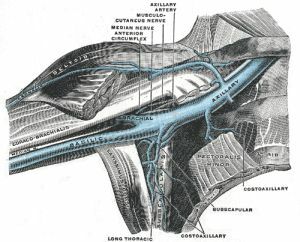 Timely diagnosis done and adequate treatment of Paget-Shreter syndrome give very good results.
Timely diagnosis done and adequate treatment of Paget-Shreter syndrome give very good results.
Treatment is carried out in most cases by conservative methods.
In complicated cases or if there are no positive results during two months of medical treatment, a surgical operation aimed at increasing venous outflow may be required.
As transplants, the tissues of the subcutaneous vein of the thigh are used.
